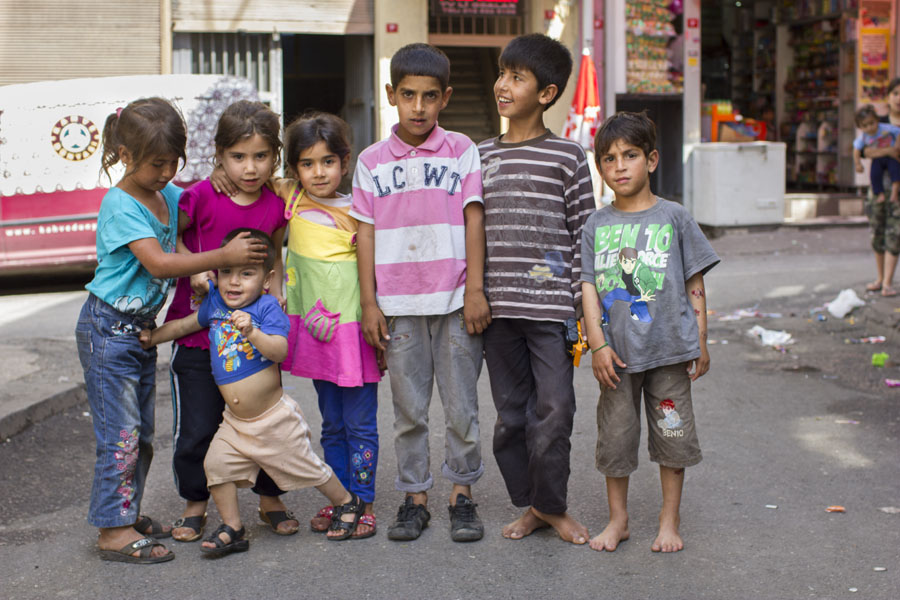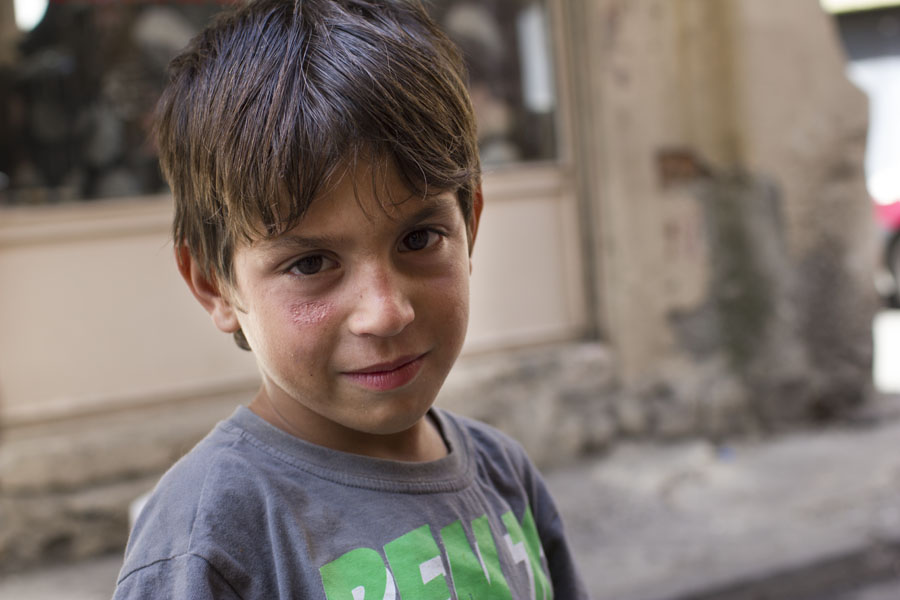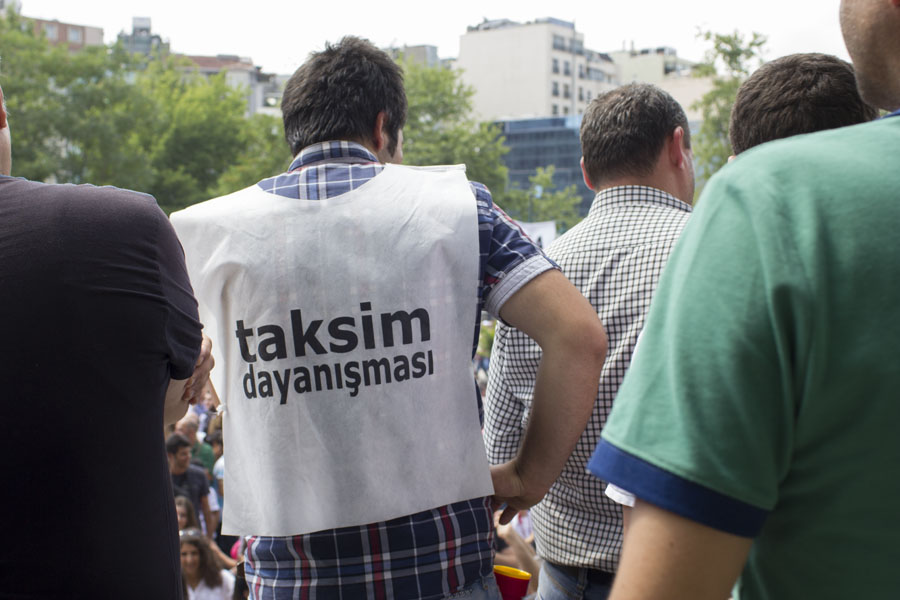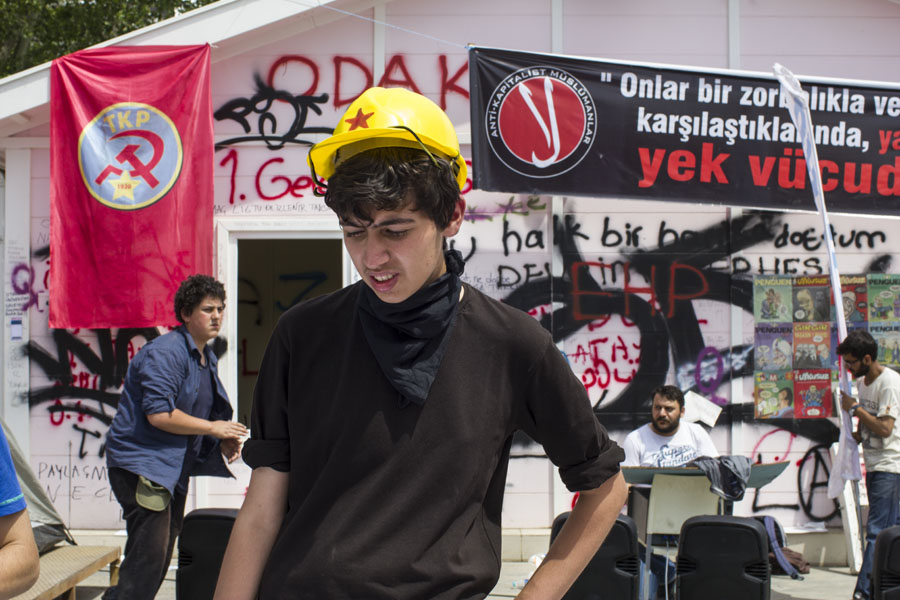A night that is almost too calm turns violent, then calm again, and then comes the day to make conclusions. Photography by May Castelnuovo.
Click here for the full series.

It’s 2 a.m. when we arrive back to Istanbul from Bursa. Istiklal Avenue is busier than at noon. Street musicians are everywhere, many playing “Bella Ciao,” the struggle’s adopted anthem. On our first day here, hearing it played in the square was a thrill. It took three days for it to become a chewed-up hit.
Even here, with all these people about, the spirit of the struggle seems less than invincible. Young folk have their photo taken by a graffiti potrait of Erdoğan, as though this were Disneyland and he Mickey Mouse. We are standing across from the now-repaired Pizza Hut restaurant’s windows, at the very spot where carnage caught us off guard the morning we arrived. Now it’s a different sort of damage that shakes us.

Just as cynicism takes over, there comes the burning sensation and Disneyland is forgotten. The barricades in Beşiktaş were again so badly gas-bombed that the entire Taksim district is in agony. Once more, things seem “real.” In more than one way, it is the police that keep the movement’s momentum alive.


Once the pollution recedes, we descend toward Beşiktaş, to the barricade where we were pepper-gassed the night before. Instead of a battle, we find an argument. Some of the activists favor descending down the dark street — the no-man’s land where I got burned by the gas canister — and “provoking” the police again. Others prefer to maintain a peaceful hold of the high ground. A girl interrupts excitedly, saying something about a camera and photos. It takes us a while to figure the camera in question is ours. She wants the keepers of the barricade to stand together for a group photo.


This may be the most wonderful, and at the same time most discouraging photo of the entire journey. They are here, so many of them. They control of the very heart of the city of 18 million souls. They are young and proud, and they are posing. They weren’t posing the day before.
The following day is to be our last on Turkish soil. May has her studies at the Bezalel Arts Academy, and I must present my weekly radio program, which will be dedicated this week to Istanbul.
After days of tears and dance, this is my one chance to touch down in the rest of the city ahead of the program, to again experience its bipolar disorder, to walk the stunning corridors of Kanyon shopping mall where Yuppies enjoy a salad of endives at “Le Pain Quotidian,” a Belgian café chain.



And the even more stunning alleyway of Fatih, in which Syrian refugee children play.




Looking at the two, I realize that what is happening here these days is nothing new. This is the city that connects Asia and Europe, the very point where eastern and western attitudes have always clashed: from the siege of Constantinople in 717 AD, to the establishment of modern Turkey via a rejection of the Fez and Arabic script.
Turkey does not suffer from an identity crisis, Turkey is an identity crisis. This is the curse and blessing of its bridge-like existence. The demonstrators may not be clear about the raison d’etre of their struggle or precisely of how to conduct it, but they are clear on one thing: the aspiration that their country take on one specific identity over another. While respecting the traditions and aesthetics of their country, they are fighting for a progressive, European Turkey. This is reflected by their attire, by “Bella Ciao,” by everything they told us. “Tayyip,” on the other hand, represents religion and conservatism — the politics of the Middle East.
In my understanding, this is what it all boils down to, from the religious issue to the environmental issue to economic ones. As much as I despise this term, what we are seeing appears to be another episode in the War of Civilizations. That war did not begin in 2001, and it is not only fought between “Christian” and “Muslim” societies (the Taksim protesters are not predominantly Christian). It is a deep rooted conflict that predates modern colonialism, that does not easily yield to contrived categories, and in Turkey, this is the sub-context of struggle.
This is what sets the Taksim story apart from other popular movements currently or recently active. In Spain and Greece the issue was the handling of an economic crisis. Here such crisis is absent. In Tunisia and Egypt, and at least at the onset in Lybia and Syria, the battle was against tyranny. Erdoğan is not a tyrant. If anything, his coming into power represents a democratic break from the army-supported Kemalist regimes of the past. What he is, instead, is a side of the Turkish story, which is the epitome of the entire eastern Mediterranean’s drama. Whether the action in Istanbul and the rest of Turkey dies down in coming days, magnifies or combusts, this will go on. It will go on for hundreds, maybe thousands of years. All we did was witness and describe four days out of history in all its endlessness.
A text message arrives from Anshel: Antakya is peaceful in the afternoon, but the issues voiced by protesters there are different and interesting. He is heading to Şanliurfa, another place where police purportedly used live ammunition and where the Kurdish issue may be part of the package. We are heading to Taksim Square, to bid it farewell, and we find that Gezi Park has been “Rothschildized” with tents.



Just as we wander into the square, thousands of members of various labor unions march into it in a stunning, very loud parade. Each union is joined by a van blaring festive music. Members of the public servants’ association are accompanied by what is unmistakably a Hassidic melody.

No need for the clarinet to highlight similarities. We are returning tonight to our own identity crisis pretending to be a country, where struggles will come and go, always being mere pieces of a grander picture and where the sense of harmony is always elusive. Our bags are full of cevizli sucuk sweets and Kashkaval cheese, our hearts full of love for this place and our heads full of questions as huge as the world.







